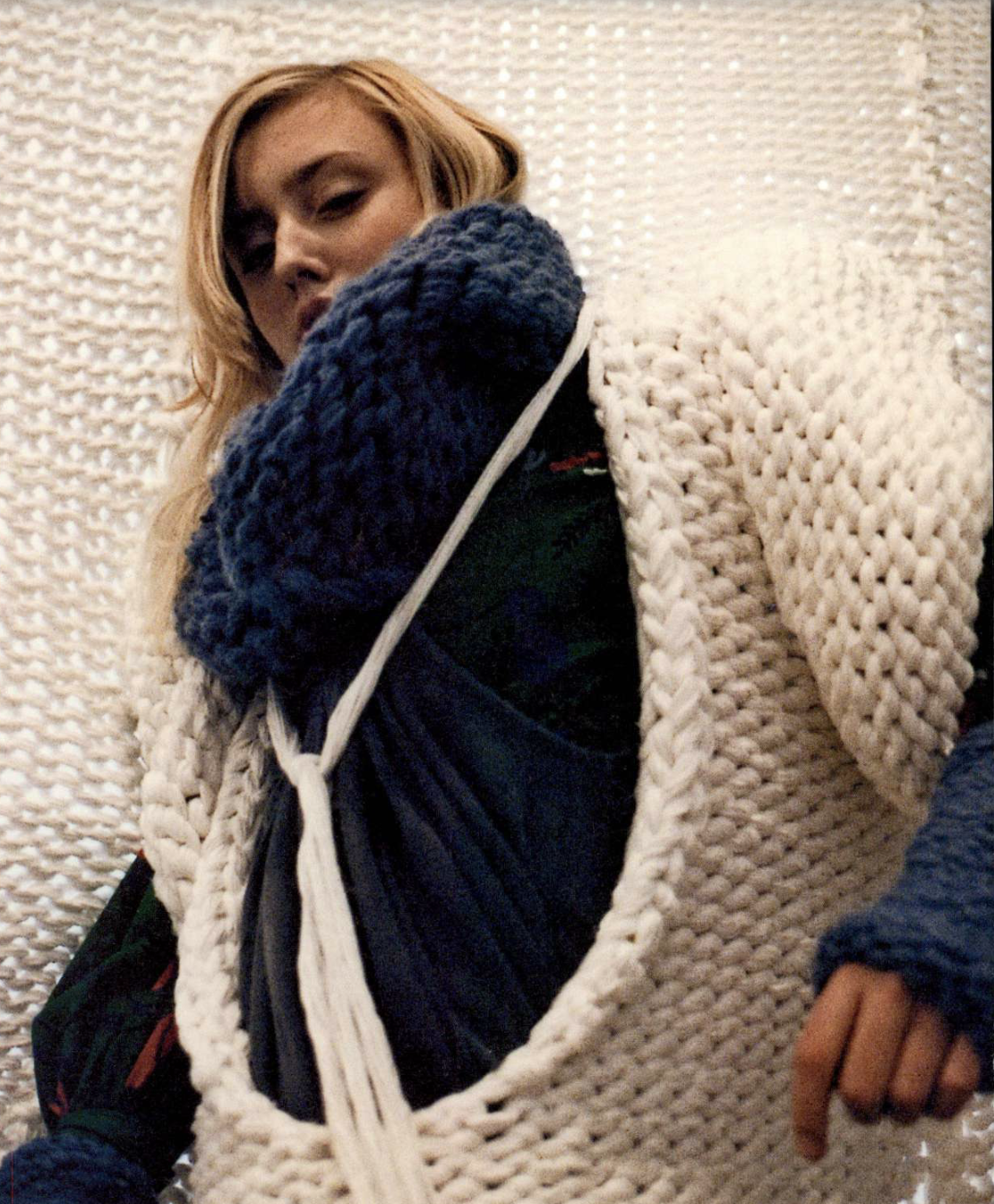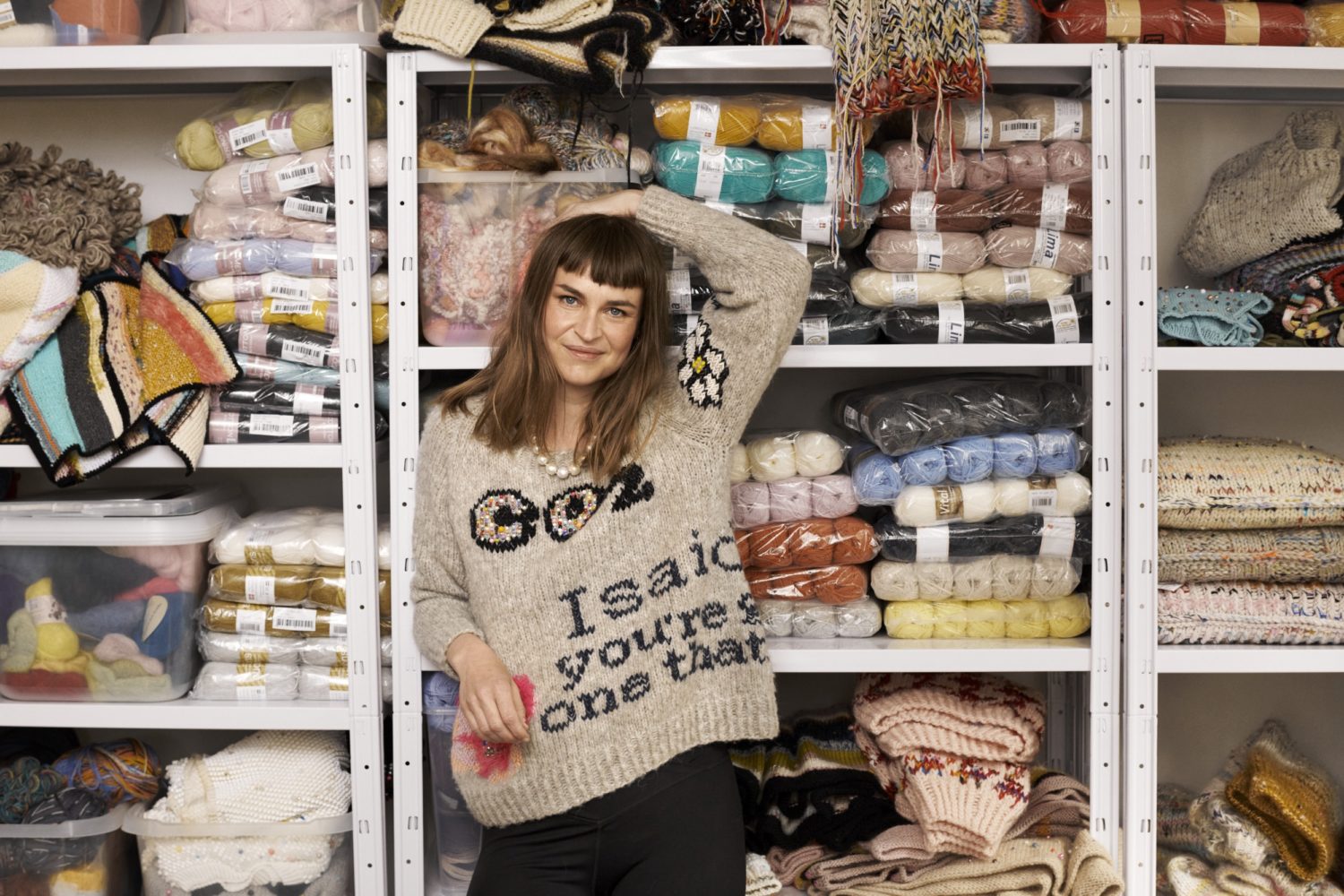My reflections on BREAKING THE PATTERN is about engagement, freedom, doing the same in a different way, thinking by hand, community.
Preface
In his book The Craftsman, Professor of Sociology Richard Sennett describes craft as a basic human impulse, a commitment and an intimate connection between hand and head. Sennett underscores that self and social relations develop through making physical things. Wits these ideas, Sennett, along with woodworker Doug Stowe, is part of a wave in American philosophy and social debate that is attributing growing cognitive meaning to craft. In a 2006 post on his blog, The Wisdom of Our Hands, Stowe writes ‘Without the opportunity to learn through the hands, the world remains abstract, and distant.’ He argues that artificial learning environments fail to activate the learner’s attention and engagement.
About
Lærke Bagger
Danish knit designer and influencer Lærke Bagger’s story illustrates how personal commitment, passion, courage and devil-may-carelessness can change established norms about how things are done and what thoughts are possible.
Education
What is education?
It is okay to start something, walk away, make mistakes and try something new. Lærke Bagger did that, in her youth, when she dropped out of a university programme and found a different path in life. In Lærke Bagger’s life, knitting has been a passion for several generations.
This passion found even more room to grow when textile artist Isabel Berglund offered Lærke a traineeship and thus a chance to spend her time knitting and perhaps even turn the craft into a livelihood. Working for Isabel Berglund expanded Lærke’s perception of knitting.
Since she was eight, she had been knitting, just as her grandmother and mother knit sweaters, and now, she knitted a 10-metre-tall chimney for a fashion week. Lærke explains that thinking big and new gave her the nerve to apply to The Danish Design School, where the dominant pattern was a choice between Fashion and Textile, and Lærke Bagger insisted on Hand-Knitting

Hand-knitting
What is the expressive capacity of knitting?
Knitting takes time. In a time when everything is full steam ahead, a speed culture where many people are becoming detached from the pattern of their life, time is seen as a luxury. But time is in fact a vital need, and by shifting her focus from machine to knitting hands, Lærke Bagger breaks with the unhealthy emphasis on speed. She also shifts the focus from the single-minded emphasis on results to a concern with processes. In a comment on knitting as a creative process, she says:
‘I enjoy the process of knitting, where things are constantly changing in my hands. Even though it takes longer to knit a jumper, the process itself is more rewarding, as I am constantly adding new colours and shaping the piece, so it’s instant feedback. I can unravel some of it or change course in a constant interaction.’
Lærke Bagger’s process is breaking with habitual and normative thinking in a culture of perfection that few people can live up to – or live in. Instead she turns to a pattern that requires focused presence and deliberate choices. Relying on intuition as a method, she is constantly challenging her own ‘good taste’.
Democratic sustainability
What is knitivism?
During the first Covid lockdown it became clear that knitting can tie people together. When Lærke Bagger launched her first knitting pattern for a jumper under her own name, Alone Together Sweater, it became a success, and today she is followed by thousands of knitters on Instagram. She uses the word striktivisme (knitivism) about her hand-knitting, a term in line with the ideas associated with craftivism and its emphasis on freedom and honesty. She is a person with a very conscious attitude towards knitting.
In an interview (Femina, 2021) Lærke Bagger says:
‘What I really like about knitting is that it is democratic, because it is accessible to most people, and it tells a story about its historical origins in necessity where people used whatever they had to hand.’
This social aspect is also brought up by Betsy Greer, British writer and proponent of the term craftivism, in her book Knitting for Good!
‘I began to understand that there are benefits to knitting with others beyond just teaching them something new and then setting them free. We can have conversations that unfold just like the knitting itself. (…) The ease of conversation prompted by craft helps us connect with others beyond our own racial, economic, or social backgrounds (…).
Michelle Baggerman in the book Social Fabric: ‘By expertise, the body of knowledge remains in motion, helping both the craft and the people practicing it to develop. We call this social construction of craftsmanship ‘social fabric’ (Baggerman)
Knowledge sharing
From hand to thought.
In social settings, a rhythm emerges between people. Knitting hands follow a rhythm that allows for contemplation and reflection, which makes it easier to talk, also about more difficult topics. I experienced that in the kitchen during my childhood in the country when an entire day was dedicated to butchering and processing meat. Everyone was busy with their hands, and talk flowed freely about life, death and everything in between. Knowledge and experience were shared.
I had a similar experience when I trained as a weaver at Aarhus Kunstakademi (Aarhus Academy of Fine Arts) and had a full year’s material studies. On our team, we spun many fibres that year, and we did it together. We cut up our finished weaves so we could share. We all learned something every time one of us had done a weave.
Model
What do social media have to offer?
Lærke Bagger shares and encourages everyone to share and post their experiences with knitting, step by step, on social media, and in 2021, the book Lærke Bagger Strik was published by the Danish publishing house Gyldendal. It speaks directly to many of the young people I meet in my work as a folk high school teacher. To them, the book offers knitting inspiration as well as important inspiration for life.
Lærke Bagger expresses a refreshing and liberating attitude towards the craft of knitting as well as towards life, the social fabric and the individual search for principles and freedom in life; the courage to believe in oneself and to embrace the mistakes that enable new learning. Let us continue to do that and to help each other break patterns, physically as well as digitally – carpe diem!
Sources
Bagger, L.(2021) Lærke Bagger strik. Gyldendal.
Baggerman, M. (2012-2013) Strategic Creativity Series, Social Fabric.
Greer, B. (2008) Knitting for Good! Trumpeter Books. Boston.
Rytter, T. (2021, 25. januar) Lærke Baggers striktrøje gik verden rundt: Den skal bringe folk sammen. (Lærke Bagger’s jumper went around the world: It aims to bring people together) https://www.femina.dk/stil/mode/laerke-baggers-striktroeje-gik-verden-rundt-den-skal-bringe-folk-sammen
Sennett, R. (2008) The Craftsman. Yale University Press, New York.
Stowe, D. (2006, 16 October) Wisdom of the Hands, (blog)
http://wisdomofhands.blogspot.com/2006/10
More knowledge in the Archive
Search the archive for additional knowledge.
Theme
You only need to look carefully at any piece of textile to see the theme of this issue of Formkraft: fibres + connectedness = textile.
Whether fibres are being spun, woven, crocheted, knitted, braided or felted, the purpose is the same: binding a vast number of tiny fibres close together in formations that now suddenly possess new potential and capacity. The loose fibres become fabric, knitting, felt or mesh, which in turn becomes clothing, sails, fishing nets and upholstery – among many other objects.


